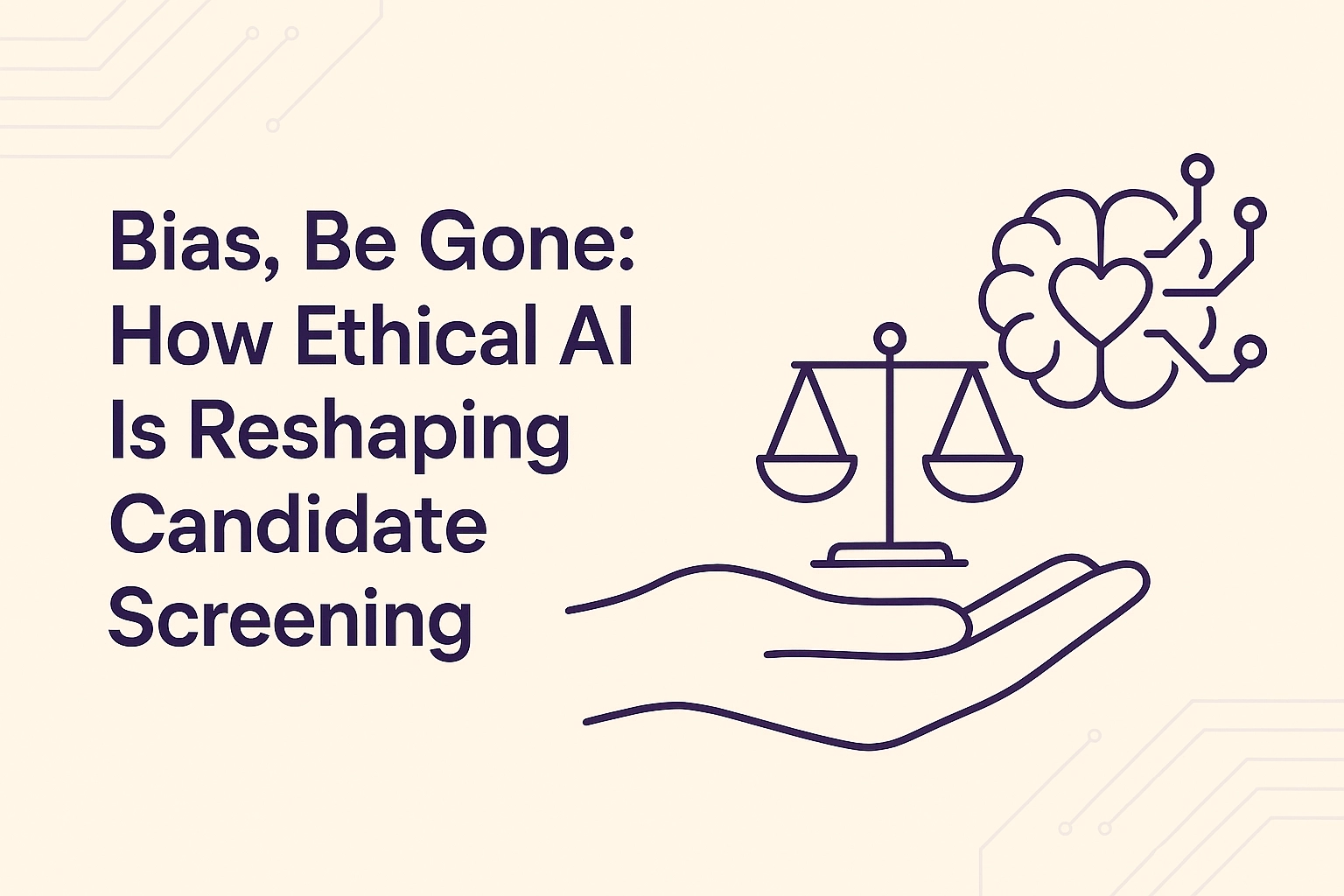Bias, Be Gone: How Ethical AI Is Reshaping Candidate Screening
TL;DRAI won’t solve bias on its own but done right, it can reduce human prejudice, increase consistency, and reshape how we evaluate candidates. Ethical AI in hiring requires transparency, data checks, and human oversight. This article unpacks what that really looks like in 2025 with insight from experts like Olivia Gambelin and Torrin Ellis, and practical examples from tools like Taira.Why Bias Is Still the Biggest Hiring RiskDespite decades of awareness, bias remains a systemic issue in recruitment. Studies consistently show that candidates with “ethnic-sounding” names receive fewer callbacks. A landmark 2004 study in the US found that résumés with traditionally African-American names were 50% less likely to receive interviews than those with white-sounding names, even when experience and skills were identical. In the UK, similar research by the Department for Work and Pensions showed that candidates with non-Anglo names had to submit 74% more applications to get the same number of interviews.The hiring process is filled with moments where unconscious bias creeps in: scanning CVs, making assumptions during phone screens, interpreting body language in interviews. Even well-intentioned recruiters can make biased decisions based on snap judgments.That’s the context AI steps into.Can AI Really Reduce Bias?Let’s be clear: AI isn’t immune to bias. In fact, if trained on biased historical data or poorly defined rules, it can replicate and even amplify the same inequities it’s meant to fix. But when implemented ethically, with careful design and oversight, AI can do something powerful: it can interrupt human bias before it happens.How? By replacing subjective judgments with structured decision-making.For example, AI can be trained to assess responses to structured screening questions using a fixed rubric not a “gut feel.” It can evaluate video interviews based on speech content alone, ignoring irrelevant factors like accent, background, or perceived energy levels. It can ensure every candidate is asked the exact same question, removing inconsistency between hiring managers.A 2022 study from the Institute for the Future of Work found that organisations using structured, transparent AI tools in early-stage screening saw a 23% increase in interview diversity year-over-year.This is exactly the challenge Taira was built to solve. By using structured questions, transparent rubrics, and language-based screening that removes visual and background-based bias, Taira ensures every candidate is assessed fairly - regardless of how they look, speak, or submit their application.And because Taira disqualifies candidates based only on predefined, role-specific criteria, there's no risk of subjective “gut feel” creeping in - a major driver of bias in manual reviews.What Makes AI “Ethical” in Candidate Screening?Ethical AI is not about using the most advanced tech it’s about how the tech is built and governed. Here’s what matters:- Transparent criteria: Candidates should know what they're being assessed on. This is not just good practice - in many jurisdictions, it’s a legal requirement. AI screening questions and evaluation logic must be explainable.
- Data audits: Training data should be representative and continuously reviewed. Any model built on historical hiring data must be stress-tested for demographic bias.
- Human-in-the-loop governance: AI should support decisions, not replace human judgment altogether. Many leading organisations use AI to shortlist or rank candidates, but final decisions involve recruiter review.
- Bias testing: Models should be regularly tested for disparate impact. For example, do candidates from different genders, ages, or ethnic backgrounds receive statistically different scores?
Taira screens and shortlists candidates using structured, bias-reducing criteria — and never makes a decision you can’t audit.✅ Transparent logic
✅ Configurable compliance
✅ Built for fairness from day one👉 Book a demo | 👉 Watch our AI Ethics webinarsFinal ThoughtsBias will never disappear entirely from hiring. But with the right guardrails, AI can significantly reduce it. The goal isn’t to replace TAs, it’s to support them with tools that make decisions fairer, faster, and more consistent.As more companies embrace AI in their hiring stack, the question isn’t whether to use AI. It’s how to use it responsibly.Want to see how AI screening works in the real world?Book in to see Taira in Action









